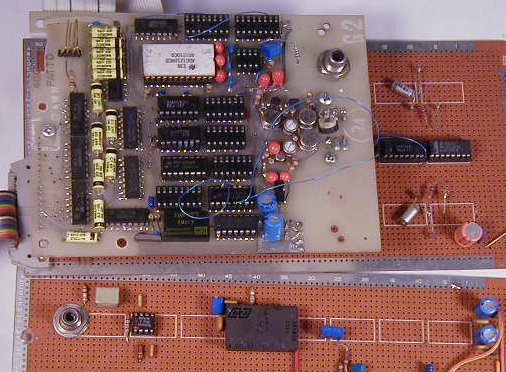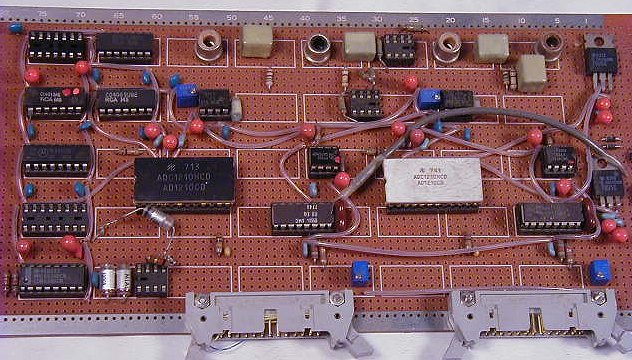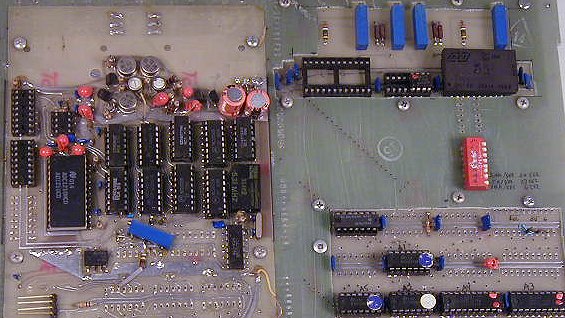Some of my experimenting was involved with converting analog to digital, and back.
The simplest application of this technology was time delay, but when you start experimenting, you sometimes get carried away.
If the delay time is short, you can make some great echo effects. If the delay time is long enough you can play rounds, such as "Row Your Boat" for instance - get the tempo near where you need it, then adjust your playing speed just as if you were singing along with two other people.
If you are able to vary the delay time at will, you can produce some interesting speeding up and slowing down effects. With a very short time delay, you can get phlanging effects.



The Notepicker was a block of memory which could be recorded with about 6 seconds of audio at 10K BPS. It was based on a Z80 processor. I set aside just enough memory space for the controller software which would read the keypad, and write or read the data, and update a LED display.
The Z80 could only handle 8 bits, so I rewired the memory bus only to the A/D and DAC. The Z80 would just read and write to thin air, not knowing that it was only being used as a DRAM controller.
In operation, audio was fed into the A/D, and could be monitored at the DAC. When the Record button was pushed, the Z80 was tricked into writing the samples into RAM, and stopped when the end of RAM was finished.
When the Play button was pushed, the Z80 would read the samples from RAM and send them to the DAC.
There were also two pointers held in the Z80 - one for the beginning of data, and one at the end. Two buttons would move the beginning up and down, and two more would move the end up and down. This made the sample sound like a tape loop which could be shortened or lengthened while it was playing.
The fun part came with a third set of buttons which would move the beginning and the end up and down together, creating a moving window. By setting the window short enough, it was possible to constantly play one note until it could be found on a synthesizer, then walk up or down to the next note so it could be picked out. That's where the name Notepicker came from. It can also be used to make someone repeat ad nauseum. You can also walk the window up, then hold a note indefinitely, then continue. One of the samples I kept was from Billy Joel's "Longest Time". The line was sampled so it comes out "I intend to hold you for the looooooooooooooooooooooooooooongest time".
One more thing that I did on Notepicker 2 is to record a sample, then play it back at twice the sampling rate, but periodically kick the pointer back half the spaces. This resulted in the music having the 'Donald Duck' sound, but at the correct tempo. Made Bruce Springsteen sound like Alvin.
It would seem that with all these Sound Blaster cards in use, someone would have come up with software to do all this. Notepicker 2 used a BASIC computer similar to the TRS-80 as the interface, but the 2 Meg of DRAM was controlled by an arbiter of my own design, which would read the RAM, write to it, or perform a refresh by default. The beginning, end, and window pointers were all done with 4-bit presettable up-down counters (74C193) and 8-bit comparators (74HC688).
If there is a Notepicker 3, it will have static RAM.